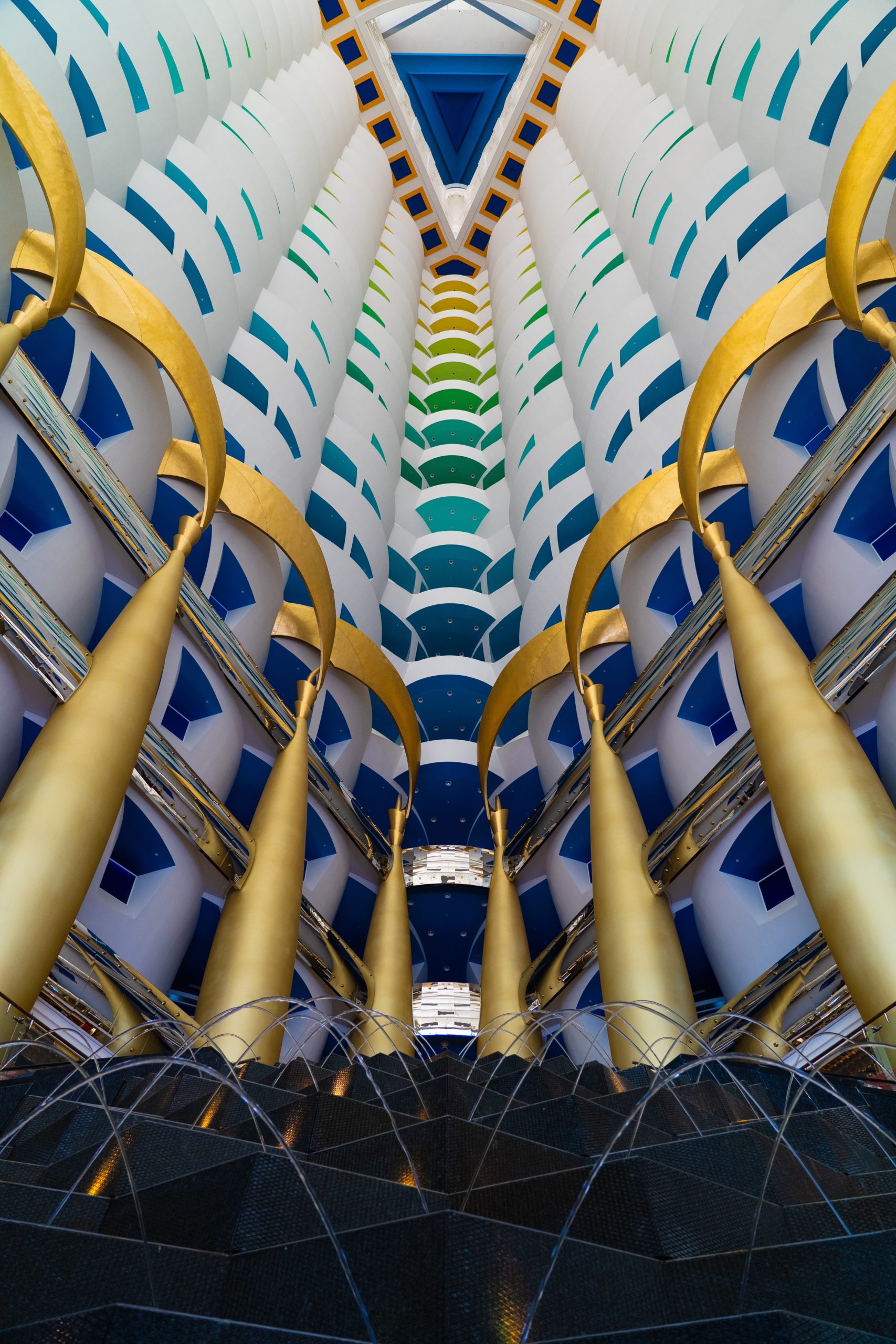By John O’Ceallaigh
Dubai’s hotels deserve their reputation for innovation, but still it seemed strange to hear Jumeirah Burj Al Arab, self-styled as ‘the world’s most exclusive hotel’ and labelled mystically as a ‘seven-star’ property by others had launched Inside Burj Al Arab tours that would provide groups with access to the property, including entry to its blazingly extravagant Royal Suite – a space that was previously booked out at an average rate of £19,000 a night. The tours cost from AED249 per person, which is about £50.
I tried the tour when I stayed at the Burj a few weeks back, and it’s a really intriguing addition to the property’s offering – considering the hotel’s rarefied reputation, it seemed a bit risky to me. Would gawking crowds cluster round guests as they sunbathed or sat down to afternoon tea? This is, after all, a hotel that stands on its own dinky private island; security guards man its entrance 24 hours a day to ensure nobody can wander in without clearance, and
tourist buses regularly disgorge their parties at the gates for quick-fire photo-taking opportunities.
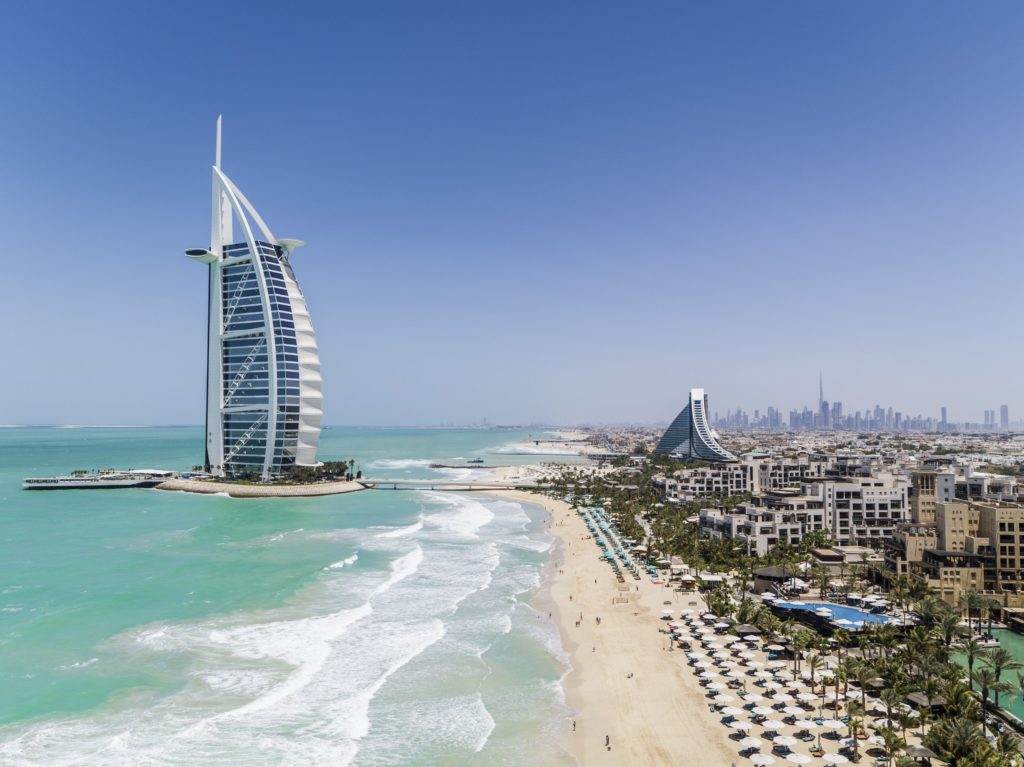
These new tours, the website confirms, accommodate up to 12 people at a time and depart every 15 minutes from 9:30am to 8:30pm. Before my arrival I wondered how overnight guests at the hotel, where summer rates and winter rates start at £1,100 and £1,700 respectively per night, might
feel about this potential intrusion, and whether it would make a positive contribution to the hotel or have a detrimental impact. (Of course, it’s already possible to access the hotel as a day guest by making a reservation for lunch or dinner at its restaurants or booking a lounger at its beautiful Terrace beach club, but capacity in both instances is limited and the cost is significantly higher; the set menu at French-Italian restaurant Al Muntaha costs £225; a day pass for the Terrace costs from £165, with half of that redeemable as a credit against F&B.)
It seems that whoever composed the tours was similarly mindful about ensuring tour groups could enjoy the property, without overnight guests feeling their stays were being put on display or their privacy was somehow being compromised (tours of the hotel were actually offered many years back, though I heard feedback that this facet of the experience had been difficult to manage at that time).
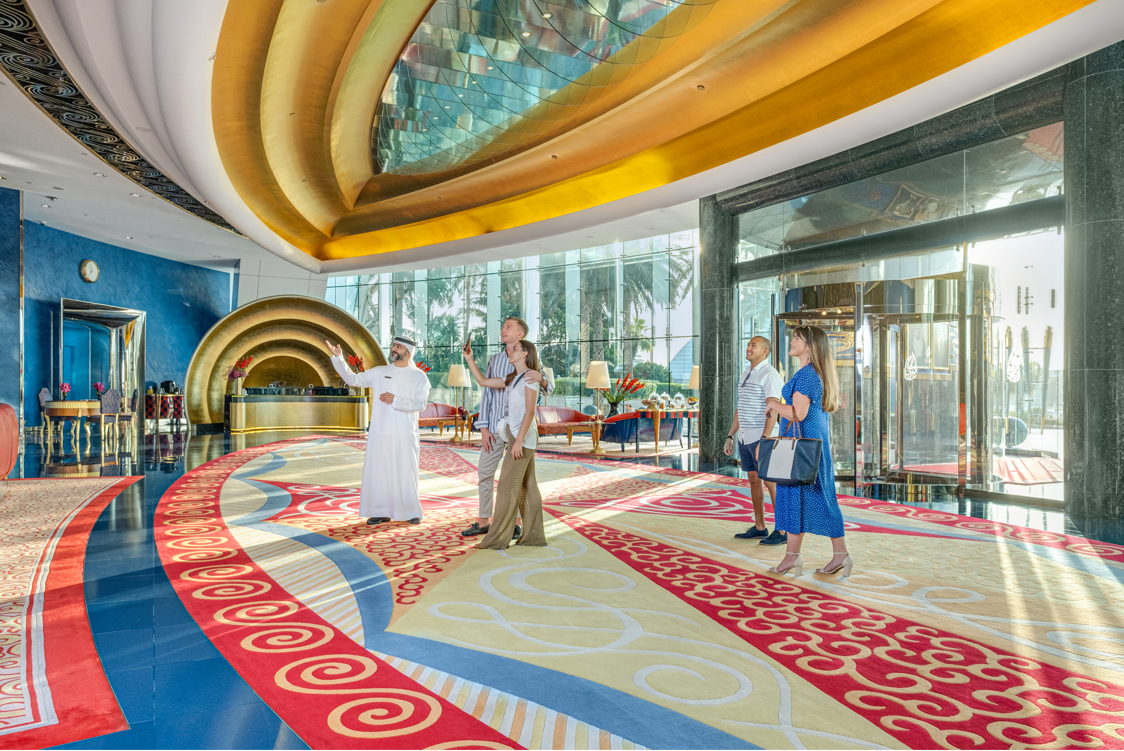
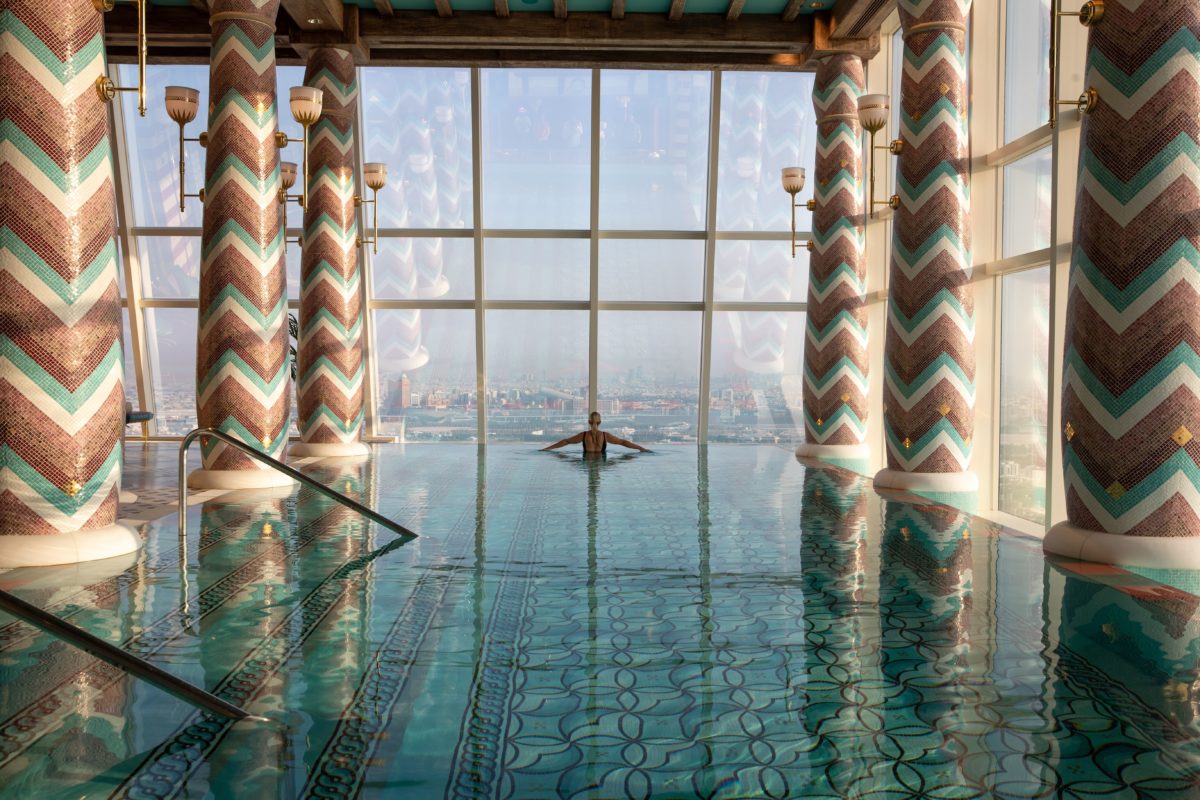
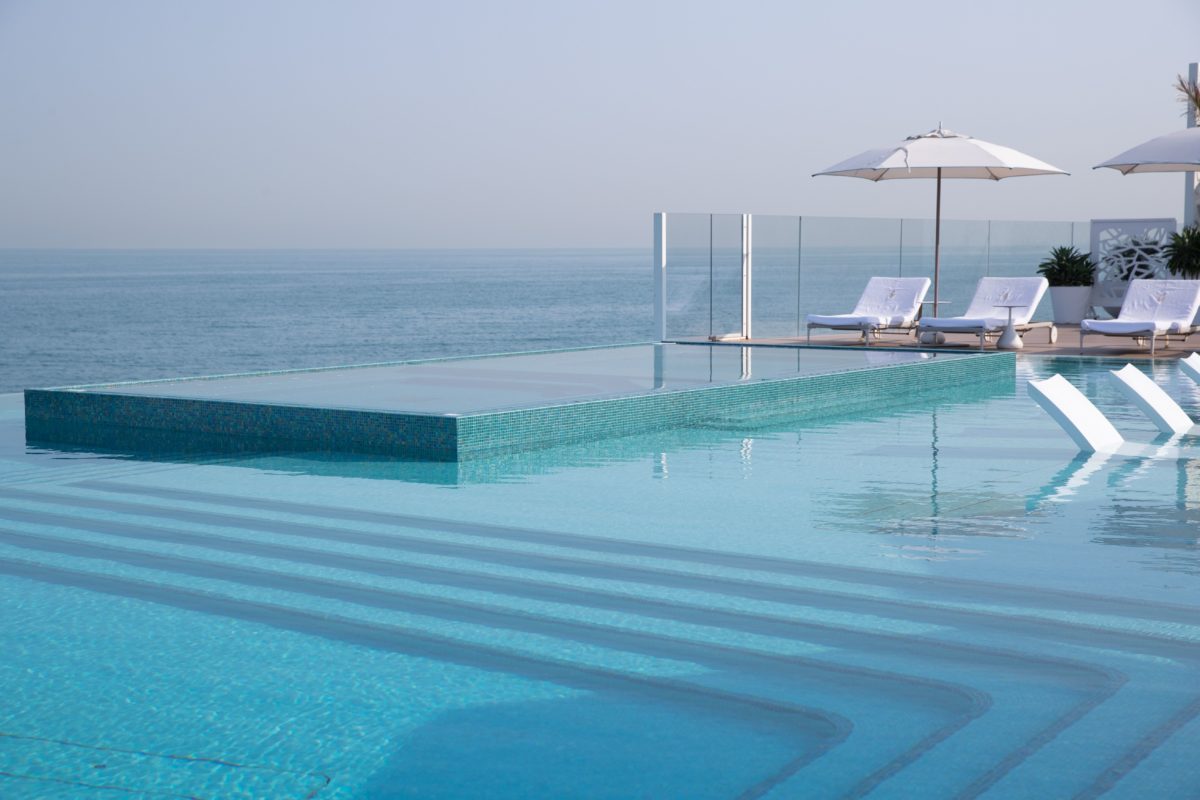
Now tour groups access the hotel via a standalone entrance used exclusively for the tours, where they’re briefed on the history and heritage of the property. I’m accustomed to European tour guides who can reel off endless obscure historical facts so I did feel there was some room for improvement in this part of the tour: my guide could, for example, tell me that the hotel’s three gargantuan aquariums house more than 3,500 fish but struggled to name any of the species. After telling me that the 180-metre-high atrium was the second-highest atrium in the world, he couldn’t name the largest. (We later learned it belongs to some building in China.)
Still, as a journalist I have a habit of asking annoying questions nobody else particularly cares about, and really this is a building that speaks for itself. First conceived in 1993, it opened in 1999 and is without doubt a true icon of Dubai as well as one of the world’s most photographed buildings. It’s also one of the world’s most famous hotels – given we now assess merit based on Instagram followings, it’s notable that this is one of the only resorts in the world with more than 1 million fans on that platform. There’s so much more to be said about it too, much of which I learned on the tour.
Some key facts I gathered that day:
– Approximately 3,500 people work on site at Burj Al Arab every day (while its owner Jumeirah Group employs masses more and also operates a cluster of luxury resorts around it)
– 24,000 square metres of Statuario marble line the hotel’s walls and floors
– 21,000 Swarovski crystalls are embedded in the lobby ceiling of the ground-floor mezzanine
– Costing AED27,321 (which currently converts to £5,670), the world’s most expensive cocktail was on sale in its rooftop bar back in 2008. It was purchased nine times. It was so called because the bar in which it was served occupies the 27th floor of the 321-metre-tall building; its ingredients included 55-year-old Macallan single malt natural colour whisky, dried fruit bitters and homemade passion fruit sugar. It was served in an 18-carat gold glass.
After their orientation, groups are led into the hotel’s lobby and up an escalator past one of the property’s huge aquariums to a fountain where it’s possible to take pictures of the atrium. About the height of the Statue of Liberty, it really is a sight to behold. With a gradient of technicolours distinguishing the floors above, peering upwards reveals a rainbow; the scale of the space is mesmerising. Surprisingly too, tour groups somehow manage to remain inconspicuous – this is such a vast expanse that 12 people at a time walking through don’t attract much attention. Throughout my stay in the hotel, it was only when doing the Inside Burj Al Arab tour myself that I was aware of it.
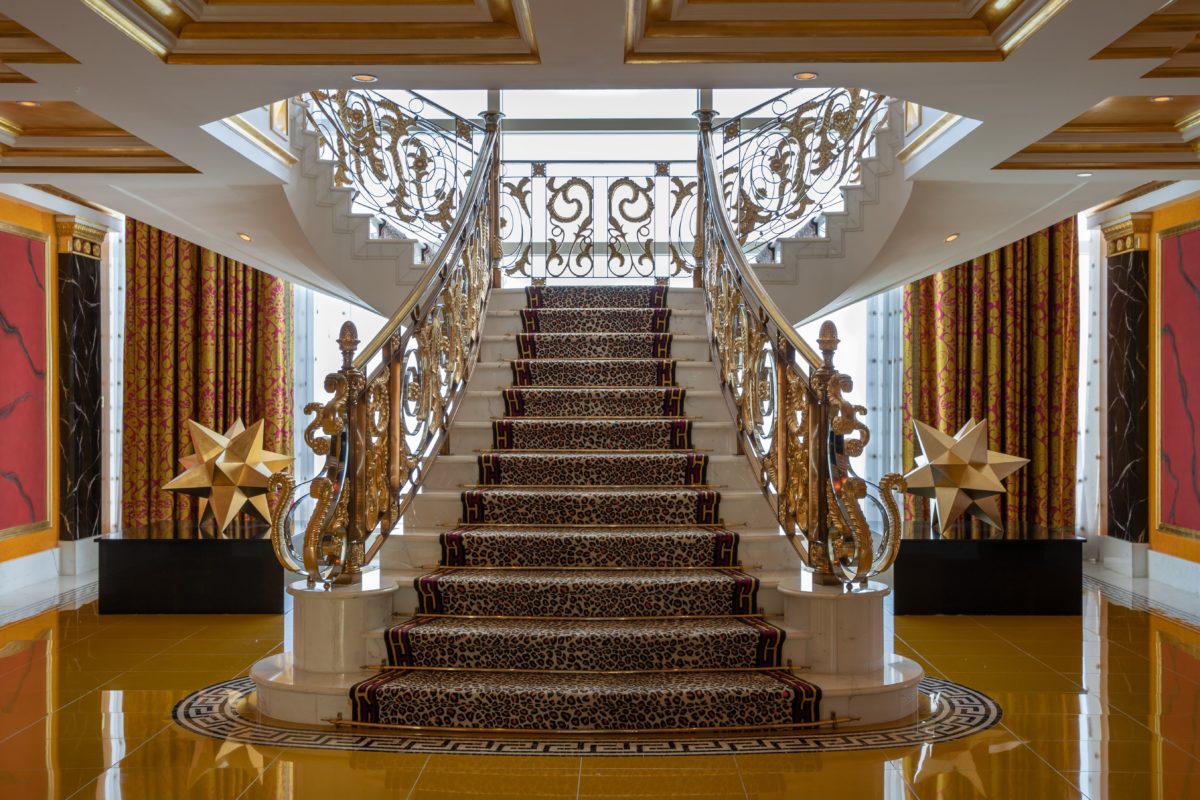

From that point onwards, tour groups are shepherded to an elevator designated specifically for their use and then directly onwards to the hotel’s 25th floor. This is the home of the Royal Suite and given how much it cost to stay there for the night I was astounded the space was being permanently reappropriated for inclusion in these tours, until I did the maths. While the suite had the potential to be highly lucrative, such spaces are never permanently occupied. I was told the tours were welcoming an average of 500 guests per day, equating to about £25,000. That’s a staggering amount of extra revenue the property has been able to produce. It’s hard to think of any other hotel in the world that would have the potential to replicate that model so lucratively and successfully (both in terms of being both admired enough to draw in those numbers and then having the scale to absorb them so seamlessly).
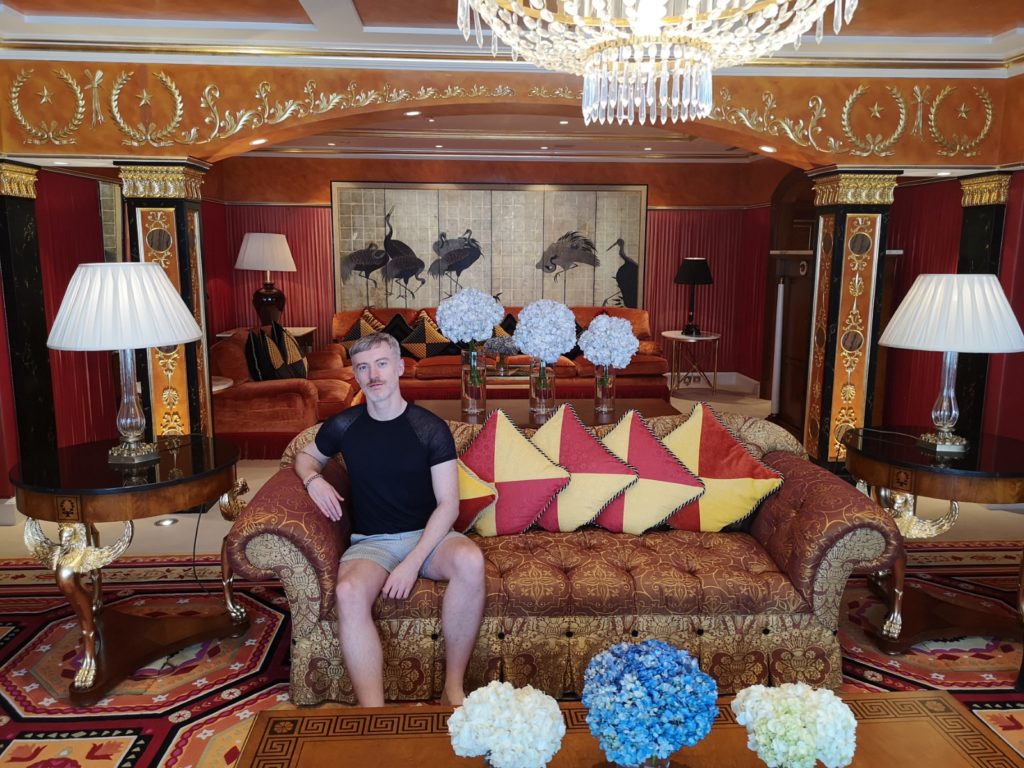
The Royal Suite itself (all 780 square metres of it) is simultaneously unbelievable and exactly what you hope it would be. Double doors are opened from within by a butler to reveal a grand staircase carpeted in leopard print; one bedroom include a bed that revolves at the touch of a button; a shower is lined top to toe in 24-carat gold; a bathroom is swathed in the last extractions of a luminous amber-coloured marble that was a favourite of Gianni Versace; a majlis-style living room is coloured so extravagantly in pink to sit down is like being encased in cotton candy (the original design was rejected for being insufficiently pink, in fact).
It’s definitely an acquired taste, and an unforgettable setting. Work has given me many opportunities to tour and stay in some of the world’s most famous hotel suites. They’re generally beautiful but a few can be a bit bland and conformist. Though the Royal Suite was too much for me, I enjoyed how the interior design just went so far out there with such conviction. My butler-guide told me that so many guests respond to the space in similar ways: “Many of the Inside Burj Al Arab guests prefer softer shades and aren’t necessarily big fans of these colours, although when I ask if they’d be happy to stay here, everyone says yes.”
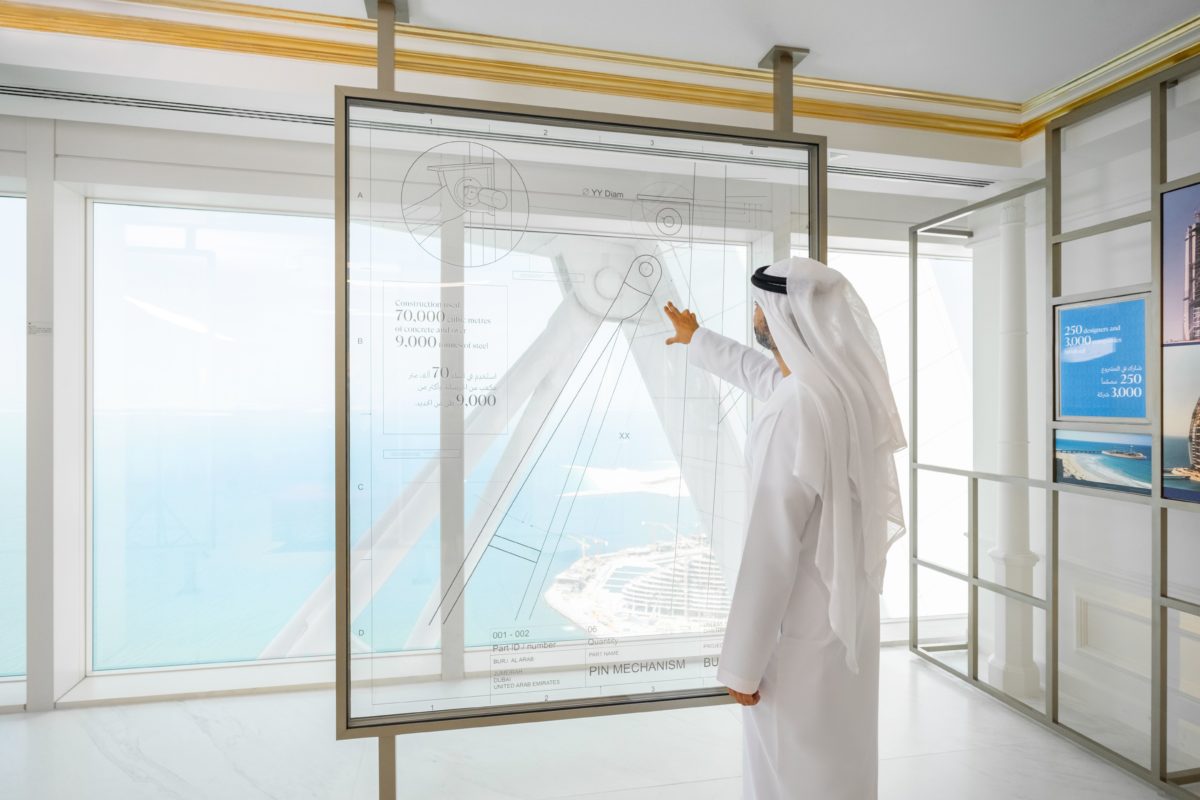


While that specific suite exhibits an extreme aesthetic audacity, the Burj’s entry-level rooms also make a big impression. In fact, they’re actually two-storey one-bed suites that provide as much space as a small city house. Interiors are vividly finished in plush purples and golds, bathrooms are stocked with full-sized Hermes products (including perfume and aftershave for guests to keep); famously, and for reasons that nobody seems able to officially clarify, mirrors are suspended over the beds. But these rooms nor any other accommodations will ever be incorporated into the Inside Burj Al Arab tours. That will only be possible for those willing to pay for an overnight stay and even after all these years the Burj still draws masses of big-spending customers. Occupancy was at 85% during my late-February, early-March stay.
Instead, after touring the Royal Suite, Inside Burj Al Arab guests are invited to wander an adjacent museum at their leisure. It includes the napkin upon which architect Tom Wright scrawled his first spontaneous design for the hotel during a trip to Dubai, prompted after he saw one of the emirate’s distinctive dhow boats sailing nearby. (Usually I assume all those stories about brilliant ideas being written down on napkins are made up, but here there’s proof.) Other displays include some of the hotel’s lustrious uniforms (each one is made to measure), alongside the F1 car that David Coulthard used to spin donuts on the hotel’s cantilevered helipad. Also featured here is a touchscreen upon which guests can play footage of some of the other events that occurred on that helipad, including a tennis match between Roger Federer and Andre Agassi; some golfing by Tiger Woods and a boxing session with Anthony Joshua. It really does look amazing.
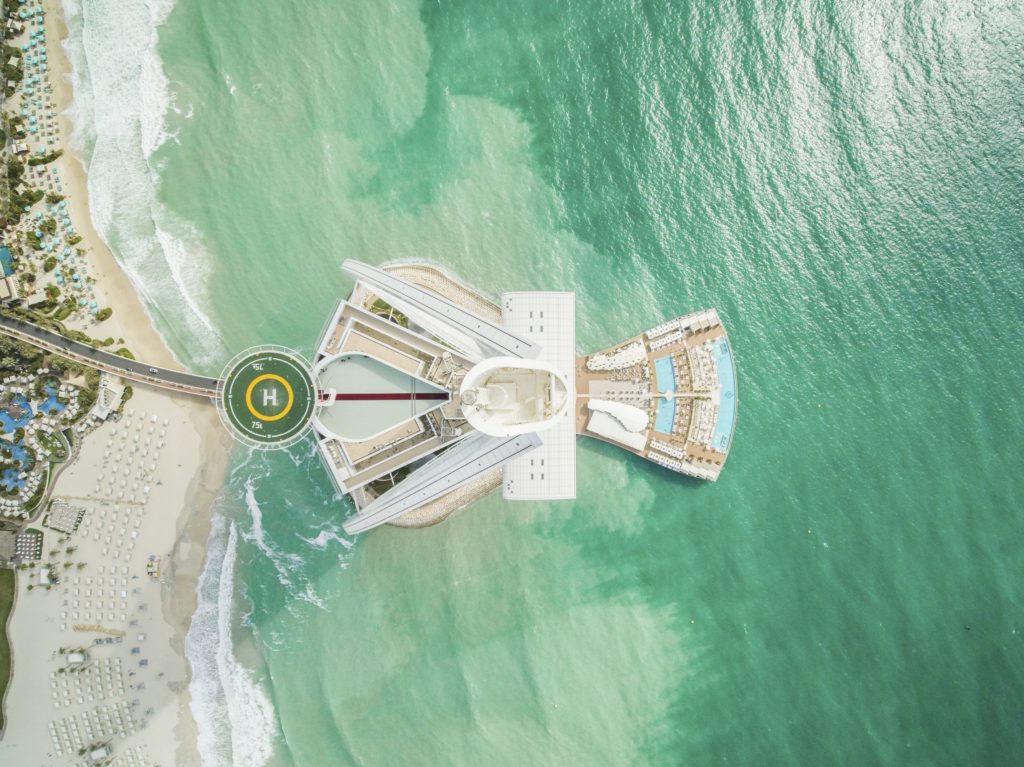
Also impressive are the views that stretch onwards from here. From this eyrie guests can look towards The World, a strange archipelago of manmade islands positioned to resemble a map. Also in view are a sprawl of other Jumeirah Group resorts, including the wave-shaped Jumeirah Masra Al Arab scheduled to open next year. Jumeirah’s CEO José Silva had previously told me it should be a match for the Burj in terms of prestige and luxury though its interiors will be aligned with more standardised aesthetic approaches to modern luxury. After taking it all in, parties are taken back down to earth – and through a Burj Al Arab gift shop selling confectionary, jewellery, stationery, clothing and more – before departing the building. Thoughtfully, there’s a chic and shaded outdoor bar by the exit where Inside Burj Al Arab guests can enjoy a cocktail or coffee as a final taste of the property before returning to reality.
Inside Burj Al Arab tours cost from AED249 (£50); accommodation at the Burj Al Arab starts from AED5,510 (£1,100).
LUTE is a luxury-travel consultant and content agency that works with hotel groups, tour operators, tourist boards, airlines and more. You can learn more about LUTE here. For frequent luxury-travel updates, follow LUTE and LUTE founder John O’Ceallaigh on Instagram.

